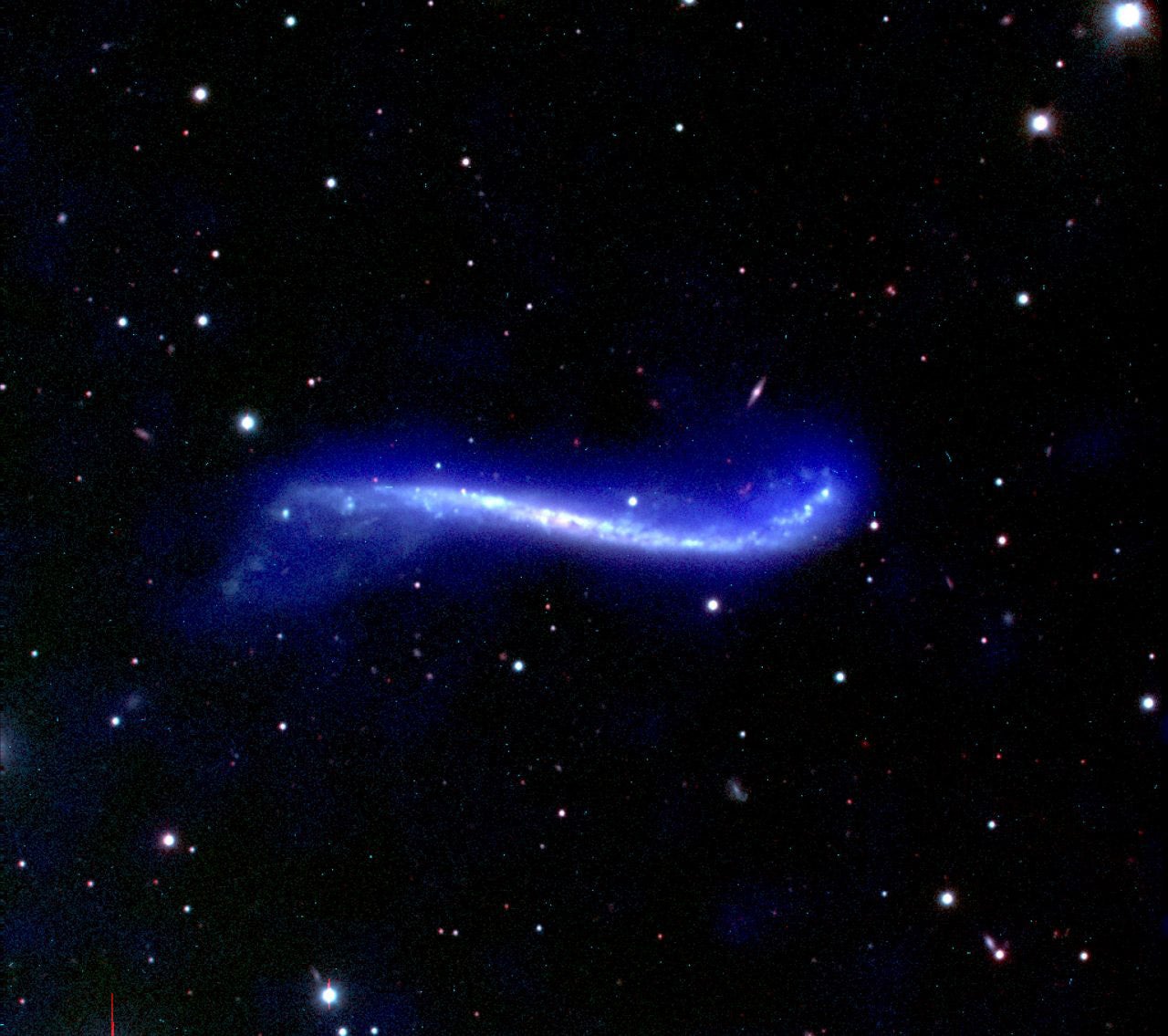
While examining photo plates of the Palomar Observatory Sky Survey in 1967, British astrophysicist Geoffrey Burbidge noticed something peculiar in the constellation Camelopardalis. A galaxy? If so, it was nothing like any he, or anyone, had ever seen. Burbidge’s weird find is now nicknamed the Integral Sign Galaxy for its warped profile, and is cataloged in the Uppsala General Catalogue of Galaxies as UGC 3697.
The Integral Sign Galaxy is an unusual super-thin Type Sd spiral galaxy seen edge-on from our perspective. Although “super-thin” may sound like a subjective term, it has a measurable definition. Super-thin spirals display little or no central bulge and have a 10-to-1 or higher diameter-to-thickness ratio. They almost always have a low surface brightness, which makes them difficult to spot.
But UGC 3697 is even more unique. Rather than having a flat disk like other super-thin spirals, the two ends of UGC 3697’s galactic plane curl slightly in opposite directions, like an integral sign (∫) or a wavy potato chip. What’s causing that, and how would this galaxy appear if we could view it from a steeper angle?
No one knows the answer to how it would look from 45° or 90°, but there’s a theory for the undulating ends. The odd appearance is likely caused by the galaxy’s relatively small mass being twisted and contorted by the peculiar neighboring galaxy UGC 3714 and several dwarf galaxies that lie nearby. Another theory comes from a study published in 2004. It speculates that the appearance may have been caused by an infalling satellite galaxy.









